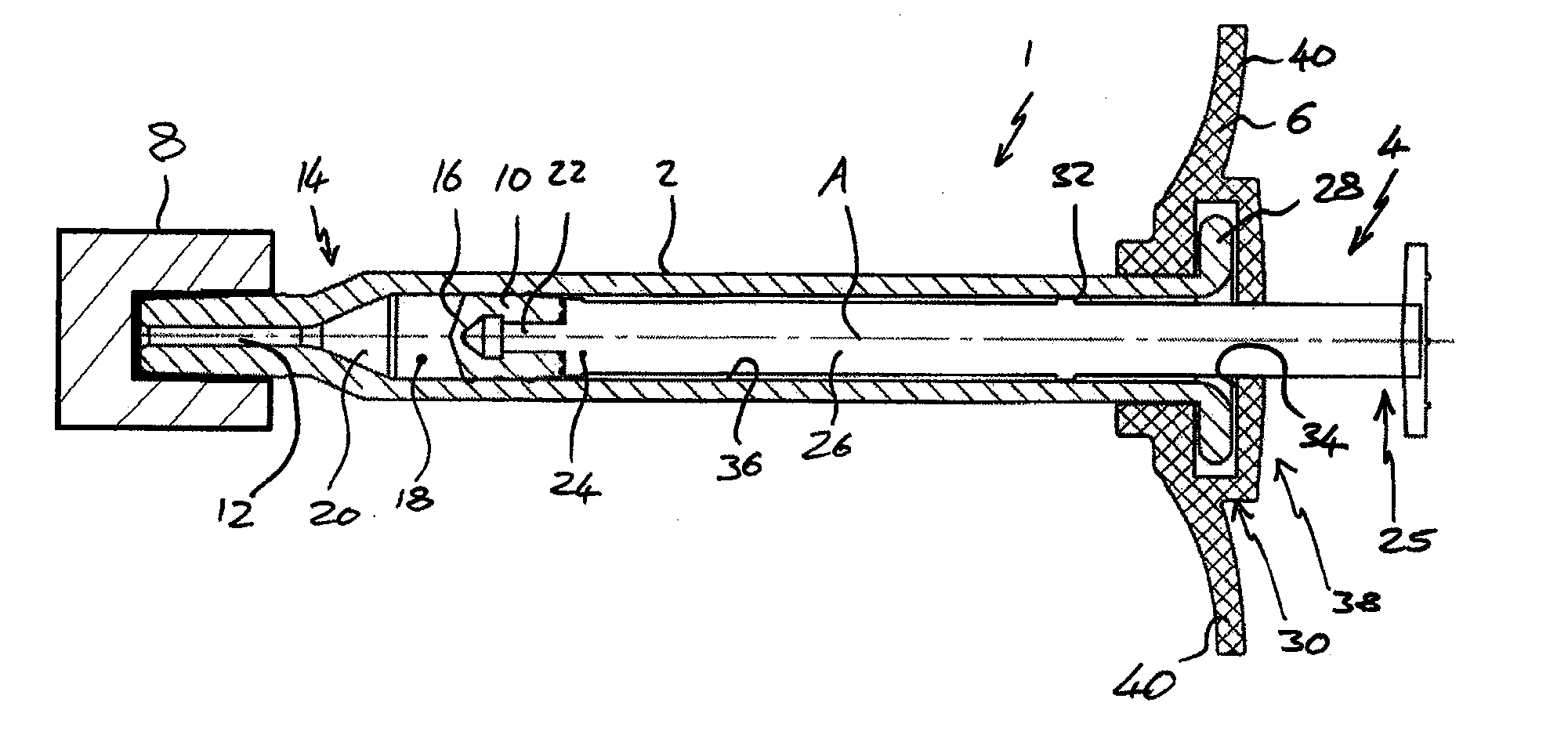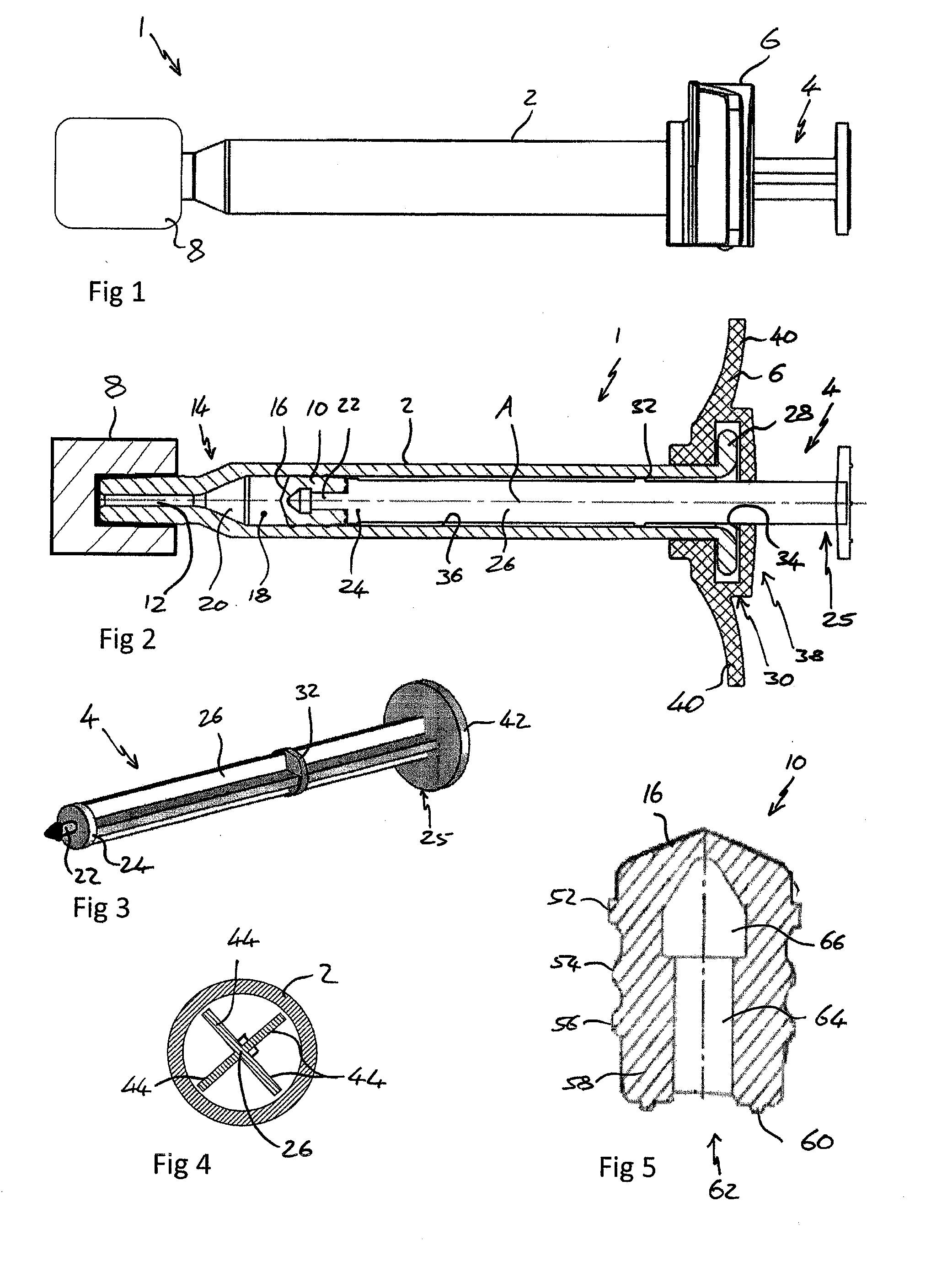Syringe
a technology of syringe and syringe, which is applied in the field of syringe, can solve the problems of compromising sterility, altering sealing characteristics, and posing difficulties in sterilisation, and achieves the effects of reducing the potential exposure of medicaments, increasing the number of ribs, and improving sterility
- Summary
- Abstract
- Description
- Claims
- Application Information
AI Technical Summary
Benefits of technology
Problems solved by technology
Method used
Image
Examples
Embodiment Construction
[0056]The invention will now be further described, by way of example only, with reference to the drawings.
[0057]FIG. 1 shows a view from a side of a syringe 1 comprising a body 2, plunger 4, backstop 6 and a sealing device 8.
[0058]FIG. 2 shows a cross section through the syringe 1 of FIG. 1 from above. The syringe 1 is suitable for use in an ophthalmic injection. The syringe 1 comprises a body 2, a stopper 10 and a plunger 4. The syringe 1 extends along a first axis A. The body 2 comprises an outlet 12 at an outlet end 14 and the stopper 10 is arranged within the body 2 such that a front surface 16 of the stopper 10 and the body 2 define a variable volume chamber 18. The variable volume chamber 18 contains an injectable medicament 20 comprising an ophthalmic solution comprising a VEGF antagonist such as ranibizumab. The injectable fluid 20 can be expelled though the outlet 12 by movement of the stopper 10 towards the outlet end 14 thereby reducing the volume of the variable volume c...
PUM
| Property | Measurement | Unit |
|---|---|---|
| fill volume | aaaaa | aaaaa |
| fill volume | aaaaa | aaaaa |
| volume | aaaaa | aaaaa |
Abstract
Description
Claims
Application Information
 Login to View More
Login to View More - R&D
- Intellectual Property
- Life Sciences
- Materials
- Tech Scout
- Unparalleled Data Quality
- Higher Quality Content
- 60% Fewer Hallucinations
Browse by: Latest US Patents, China's latest patents, Technical Efficacy Thesaurus, Application Domain, Technology Topic, Popular Technical Reports.
© 2025 PatSnap. All rights reserved.Legal|Privacy policy|Modern Slavery Act Transparency Statement|Sitemap|About US| Contact US: help@patsnap.com


